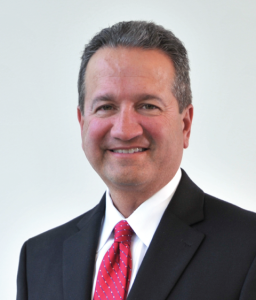Contravir Pharmaceuticals
(NASDAQ: CTRV)
CEO: James Sapirstein
Podcast: Play in new window
INTERVIEW TRANSCRIPTS:
WSA: Good day from Wall Street, this is Juan Costello Senior Analyst with the Wall Street Analyzer. Joining us today is James Sapirstein CEO for ContraVir Pharmaceuticals. The company trades on NASDAQ, ticker symbol CTRV. Thanks for joining us today there James.
James Sapirstein: Thanks for having me.
WSA:: Great so getting right into it, can you bring us up to speed on some of the news since we last spoke back in November, including the IND approval?
James Sapirstein: Sure so we’ve had a lot of news to talk about, most recently we were just able to do a capital raise. We raised a little over $10 million and we did that with something called a Rights Offering which we went back to our current investors and asked them if they wanted to come in on the deal. Therefore we didn’t dilute it{the stock] too far with new equity investors, so that was a good happening for us. And that was based off data that we had coming in early this year. We have a 505 B2 approval from the FDA which allows us to move TXL from proof of concept all the way to Phase 3. There’s an interim step that we need to do there. We do have some formulation work that we had done, so we needed to do a bridging study before we go into Phase 3. So it’s going to be a small Phase 2B study.
And so that’s what’s happening with TXL. We’re getting ready to go back into the clinic and then with CRV431 about a couple of months ago now we got the approval from the FDA to – at least they accepted our IND. And our IND is an accelerated program for us it allows us to go into healthy volunteers for a single ascending dose study—we’re in the midst of that right now. We already have some data from patients and we also are allowed to look at a three-part multiple ascending dose study and a three part study would be done in patients.
Part of it – we will be looking at multiple dosing, but also looking at drug-drug interaction piece with Viread. So CRV431 and Viread and then they’re allowing us to go into almost like a proof of concept study testing the drug in combination CRV431 with Viread in patients. So we’re excited to be back in the clinic with TXL, we’re excited to have gone into the clinic with CRV431.
WSA: Right, so please bring us up to speed on both of your platforms that you said you had the IND approval. Can you talk about trends in both of those sectors as far as Hep-B and also Shingles.
James Sapirstein: Let’s go with the Shingles because that’s an easy one. We’ve since last year – we’ve put that Shingles product on hold. Part of what we had started seeing was that our study was starting to slow down, we talked to our investigators and they told us that due to the vaccines and just the sheer fact that Shingles pain isn’t as prevalent as it used to be now because the vaccines just in general as you start seeing a whole lot of younger patients contracting the disease. We decided that we’d have the power to study at a much higher level and we’d have to go out and get many more patients. It would have cost us anywhere from $40-50 million to finish out Phase 3 program. So we put that product on hold. So there’s not much more that we can say about Shingles at this point, but in terms of hepatitis B it’s still a fairly large market close to 350 million patients infected. I’ve spent a lot of time in China talking to opinion leaders out there, their numbers have gone up, they thought it was about 40-50 million but now they’re estimating close to 80-100 million patients that are infected in China alone. There’s a market out there in monotherapy but there’s market for HPV cure or hepatitis B cure it’s evolving in the west. So we believe that once the hepatitis B cure evolves fully it’ll be a $200 billion market. So we have two compounds and we hope to be able to play well in that market place.
WSA: Well sure and in terms of Hep B as you’ve recently had the initiation there on the dosing, what are some of the key goals and milestones you’re looking at over the next 6-12 months?
James Sapirstein: The key milestone really for CRV431 is to show A) that it works in hepatitis B patients. Right now we’re in healthy volunteers, so just proof of concept that it works is going to be incredibly important. It’s going to be the first Cyclophilin inhibitor to show any kind of proof that it works in hepatitis B, so we’ll be first in class. Secondly we’re looking to be able to get into combination therapy using Viread and CRV431 to show how these two compounds work together. Once we’re able to establish proof of concept with those two compounds we’re going to go back to the FDA to see if they can allow us to put TXL in combination therapy with CRV431. Initially the FDA frowns upon doing two investigational products therefore we have to test it with Viread but being that they gave us a 505 B2 they see TXL as being very similar to Viread in a lot of different ways and safety and – well not safety but efficacy for sure. We should be able to talk to them about looking at a Phase 2A study with TXL and CRV431. I think if we’re able to show proof that both these compounds work well together in the clinic, well we’ve shown it in animal models already. We need to show it in human patients. Once we do that I think we’re going to do really, really well on the market place.
WSA: Surely. What are some of the factors, James, that you see will make ContraVir unique from some of the other players in the sector?
James Sapirstein: Well I think right now our TXL is the most advanced product in development, we’re getting ready to go to Phase 3. There isn’t any other Hep B product right now that’s even close to being in Phase 3. With CRV431 we’re going to have the very first cyclophilin antagonist in the clinic. So that’s very different and hopefully we’ll have two products of ours that we own in combination therapy. There aren’t a lot of companies that could say that and the ones that can are big, Gilead, J&J, ect. So of all the small companies we’re the only ones that will have combination data, and I think that’s what makes us unique.
WSA: I think that’s definitely very important to note that you’re one of the few companies with two anti-HPV assets in clinical development. What are the key drivers there that you wish investors better understood about you guys as far as the market and the opportunity?
James Sapirstein: Our share price really doesn’t reflect how well we’ve been doing in the clinic that’s for sure. So what I’d like investors to understand is that we do have advanced products. The stock price is just very deflated at this point in time, it really has one direction to go and that’s up. We’re trading just above cash at this point with two compounds that we have IP all the way through 2031. We have some excellent opportunities out there for partnering, we have some excellent opportunities there for patients. So I think if investors could exhibit more patience hold on to stock a little bit longer I think we’re going to continue to do well.
WSA: Certainly and perhaps you can talk about the key management there as well as your background and experience.
James Sapirstein: Sure well myself I’ve been in the business 17 years in large pharma and the remaining 18 years – more than half my career now in small biotech including Gilead. I was the Head of the launch for globally for Viread, so I know that compound very well. I then went to Serono and started up some other companies I was the cofounder of Tobira Therapeutics which was sold to Allergan in 2016 for $1.7 billion. And we’re hoping to have the same kind of success with ContraVir quite frankly. We have other folks in the company Terri Matkovits is our Chief Operating Officer who’s done just a terrific job with the clinical ops and manufacturing group they’re reporting to her. Robert Foster, Robert has been also in the business almost as long I have I think 32 years. Robert was a CEO for 25 years at one point of Isotechnicka which was at one point the largest biotech company in Canada. Robert is the inventor of Cyclophilin our Cyclophilin antagonist and CRV431. And he’s also cofounded other companies and also invented other products that have done very well in the clinics. So we’re excited about our clinical team, very excited about our management team moving forward and we hope that we’re able to partner with some other companies and move our products forward.
WSA: Great, once again joining us today is Jim Sapirstein the CEO for ContraVir Pharmaceuticals which trades on NASDAQ, ticker symbol CTRV currently trading at 1.38 a share, market cap is about 15 million. Before we conclude here to recap some of your key points, why do you believe investors should consider the company as a good investment opportunity today?
James Sapirstein: Well I think the Hep B market’s is in its infancy, it’s going to grow to $200 billion market, and ContraVir plans on being a part of that with our two compounds; TXL and CRV431. It’s in its infancies I say and our drugs are fairly advanced we believe we’re going to be part of the Hepatitis B cure. TXL being part of the backbone therapy and CRV431 being one of the ancillary therapies that’s going to work in conjunction with TXL. I think it’s a good investment thesis for folks to think about. There are other companies out there that have products that are not as far along in development as ours. Their market caps are a lot higher and I think we have the potential to get to be as high as they are.
WSA: Well we certainly look forward to continuing to track the company’s growth and report on your upcoming progress. And we’d like to thank you for taking the time to join us today and update our investor audience it was great having you on James.
James Sapirstein: Thanks very much, Juan.





